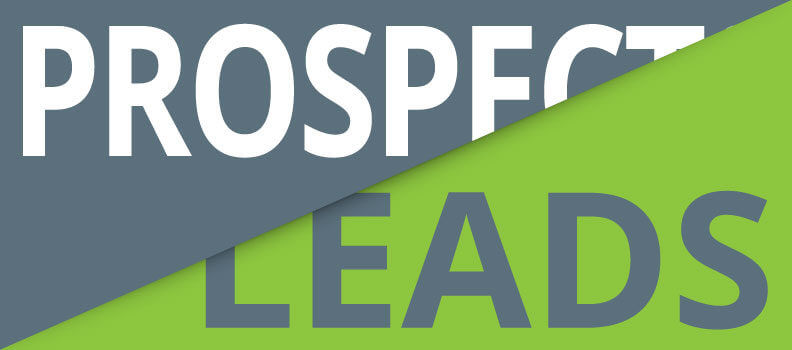While often treated the same in sales conversations, the difference between sales leads and prospects are important to understand the key roles each play within the sales funnel.
The following is an overview of the important difference between sales leads and prospects to help you successfully outline your buyer journey and targeting strategies.
Sales Funnel Position
First, consider the position of prospects and sales leads within the typical marketing and sales funnel. This funnel outlines the progression of contacts as they move from beginning to the point of conversion to a customer.
Varying depictions of sales funnels show different labels in different positions for these contacts. However, most contemporary versions identify the top of the funnel mouth, and the first stage, as the prospect step. A prospect is someone viewed as a potential customer for your solution.
A sales lead is the common next step, where a prospect has indicated some interest or met key qualification criteria to warrant more attention.
Attraction vs. Interest
Prospects are of primary importance to your marketing function. A key responsibility of marketing is to define ideal customers or buyer personas, and then attract them with promotional strategies. A prospect is often described as someone that marketing viewed as an ideal match for its marketing mix or a particular solution.
To enter the lead stage, a prospect must show some type of interest in your company or solution. You might generate a lead through an on-site web form, a social media response, an email or some other form of communicated interest.
The Role of Qualification
Qualification is a key step in the sales funnel where prospects are evaluated for their potential for becoming a customer. Marketing-qualified leads are prospects that meet particular demographic, geographic, firmographic and behavioral traits established by marketing to identify highly-qualified prospects. Sales-qualified leads meet similar standards for direct contact from the sales team.
Traditionally, prospects go through manual qualification during direct marketing activities. Contemporary marketing automation now allows prospects to become marketing-qualified leads (MQLs) or sales-qualified leads (SQLs) through triggered online behaviors.
Level of Investment
As contacts shift from the initial prospect stage to the lead stage, the level of time and resource investment increases. Marketing budgets go toward attracting attention from prospect personas. Following qualification, more time and content is invested to guide qualified sales leads through nurturing and on to the close.
The reason it makes sense to increase your investment as the buyer shifts to greater engagement is because the level of intent toward making a purchase increases as well. A prospect has just become aware that a problem exists and has begun to investigate. Qualified leads have demonstrated more interest and are preparing to move toward a purchase decision.
In Summary
Understanding the difference between sales leads and prospects is going to assist you in outlining your communication plan for targeting ideal customers.
The Salesgenie solution can be valuable in helping you target prospects that meet your detailed persona characteristics; create a Salesgenie account for free to see for yourself today!






